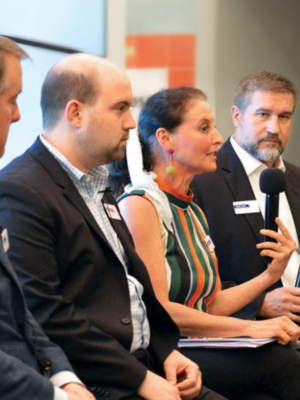 Female entrepreneurs have been making waves in business, breaking barriers, and defying stereotypes in male-dominated industries. Despite their challenges, women are creating successful companies that are making a significant impact in their industries. In this blog, we’ll explore the strategies that female entrepreneurs can use to build a successful business in a male-dominated world.
Female entrepreneurs have been making waves in business, breaking barriers, and defying stereotypes in male-dominated industries. Despite their challenges, women are creating successful companies that are making a significant impact in their industries. In this blog, we’ll explore the strategies that female entrepreneurs can use to build a successful business in a male-dominated world.
From identifying a niche to building a solid network, developing a business plan, and embracing digital marketing, we’ll provide insights and practical tips that can help women entrepreneurs achieve their goals and overcome obstacles. Then, we’ll share some women in business statistics so you can see real-world examples of how women are currently leading the charge.
So, whether you’re a seasoned entrepreneur or just starting as a young woman in business, read on to discover how to turn your entrepreneurial dreams into a reality.
Find a niche:
When starting a business, identifying a gap in the market that you can fill is essential. This could be a product or service that’s not currently available or an area where there’s a lack of competition. Conduct market research to identify potential opportunities and validate your ideas.
Steps to building a strong network:
Networking is an essential part of entrepreneurship. Building a solid network is an integral part of entrepreneurship—especially in industries completely dominated by men. Here are some steps to help you build a strong network:
1. Identify your goals:
Before you start building your network, you must identify your goals. What do you want to achieve? Who do you need to connect with? Having a clear idea of your goals will help you focus your efforts and build meaningful relationships.
2. Attend events:
Attend networking events, conferences, and industry associations. Look for events that are relevant to your industry or interests. This will help you connect with other like-minded individuals and potential customers.
3. Join online communities:
Join relevant online communities and participate in discussions. This could be on social media, forums, or other online platforms. This will help you build relationships and gain insights from others in your industry.
4. Leverage existing relationships:
Remember your existing relationships. Reach out to former colleagues, classmates, and acquaintances. Tell them about your business and ask for introductions to potential customers or other relevant individuals.
When building relationships, it’s important to be genuine and helpful. Refrain from approaching networking with a transactional mindset. Instead, focus on building meaningful relationships with others. Offer value and help others whenever possible.
5. Follow up:
After meeting someone, be sure to follow up. Send an email or connect on LinkedIn to stay in touch. This will help you maintain relationships and keep the conversation going.
By following these steps, you can build a strong network to help you succeed as an entrepreneur. Building relationships takes time and effort, but it’s worth it in the long run. You can also nurture an inner circle of women as you network — this can help support your growth and advancement in your industry.
Develop a business plan:
A business plan is a roadmap for your business. It outlines your goals, strategies, and financial projections. A well-written business plan will help you stay focused and on track. It will also be useful when seeking funding or investment.
Embrace digital marketing:
Digital marketing is an effective and cost-efficient way to promote your business. Use social media, email marketing, and other digital channels to reach a wider audience. Develop a content marketing strategy that provides value to your audience and positions you as an expert. This is especially important in key job markets where women are underrepresented, like STEM.
Continuously learn and adapt:
Entrepreneurship is a learning process. Stay up-to-date with the latest industry trends and innovations. Attend conferences, read industry publications, and seek out mentors and advisors. Be open to feedback and adjust your strategies accordingly. Continuously improving and adapting will help you stay ahead of the competition. These statistics are a great way to learn from the past to be a force to be reckoned with in the future:
- Currently, women wield approximately $10 trillion in financial assets within the U.S. This number is expected to surge to $30 trillion by the close of the decade. (CNBC)
- Women-led companies generated approximately $1.9 trillion in earnings, employed 10.9 million people, and maintained an annual payroll of $432.1 billion. (Census)
- Women-owned businesses are projected to contribute to approximately 6% of the anticipated global economic growth. (Mastercard)
- In 2022, 45% of female-owned business loan applications were accepted. (FED Small Business)
- 71% of women business owners feel prepared to navigate through an economic recession. (Bank of America)
- 44% of women-owned businesses experienced an increase in annual revenue in 2022. (FED Small Business)
- In 2022, 21% of women-owned businesses had an annual revenue between $100,001-$250,000. (FED Small Business)
- In 2022, 60% of women-owned businesses displayed profitability. (Guidant)
- A significant 59% of women business owners acknowledge having to exert more effort to achieve the same level of success as their male counterparts. (Bank of America)
By following these strategies, female entrepreneurs can increase their chances of building a successful business. Staying focused, working hard, and persevering through challenges is important for success. With dedication and some luck, you can turn your entrepreneurial dreams into a reality.
(The opinions and views of guest contributions are not necessarily those of theglasshammer.com).













